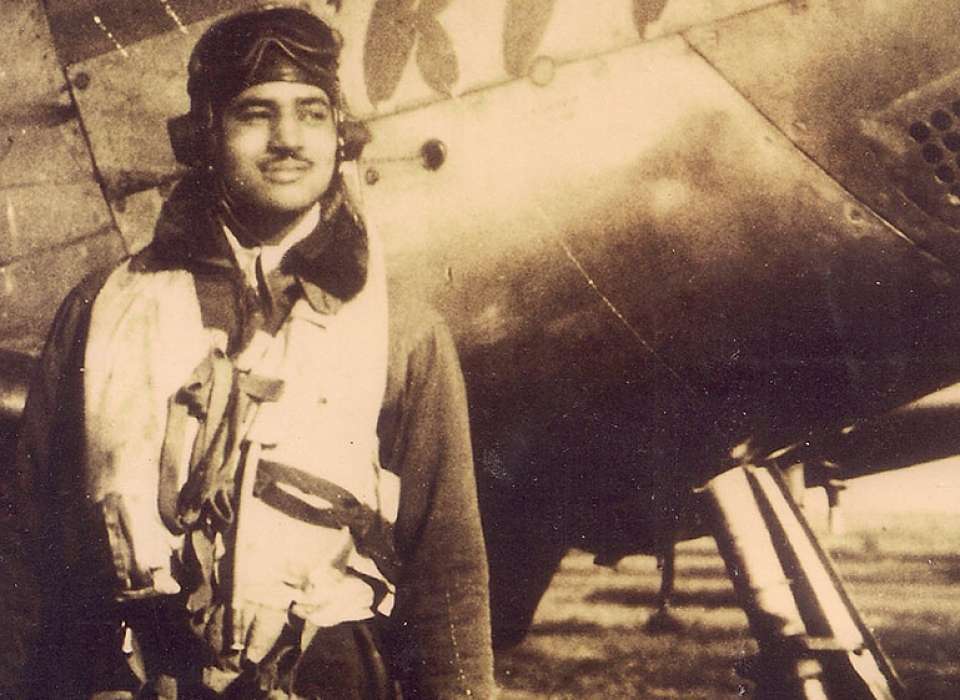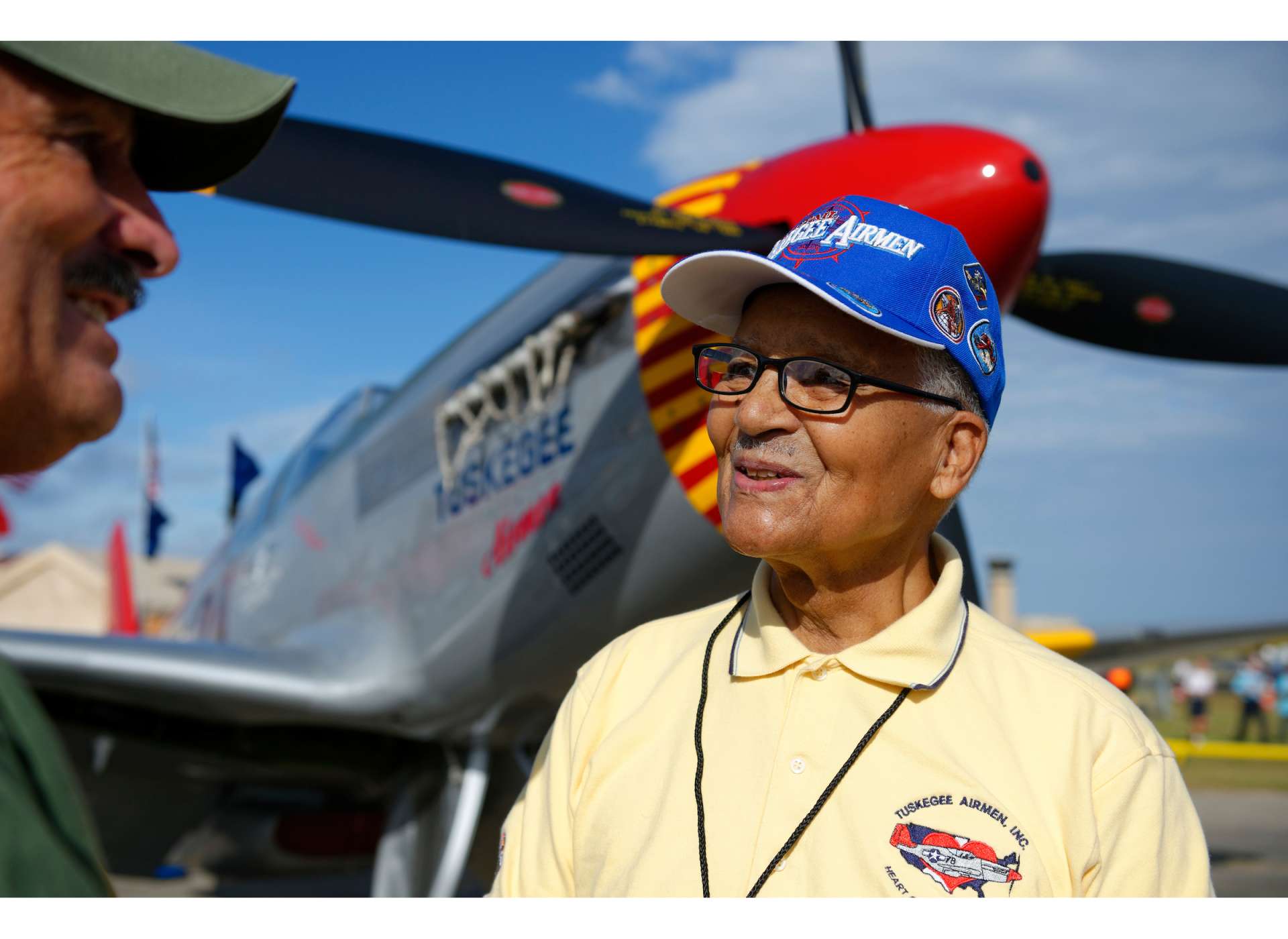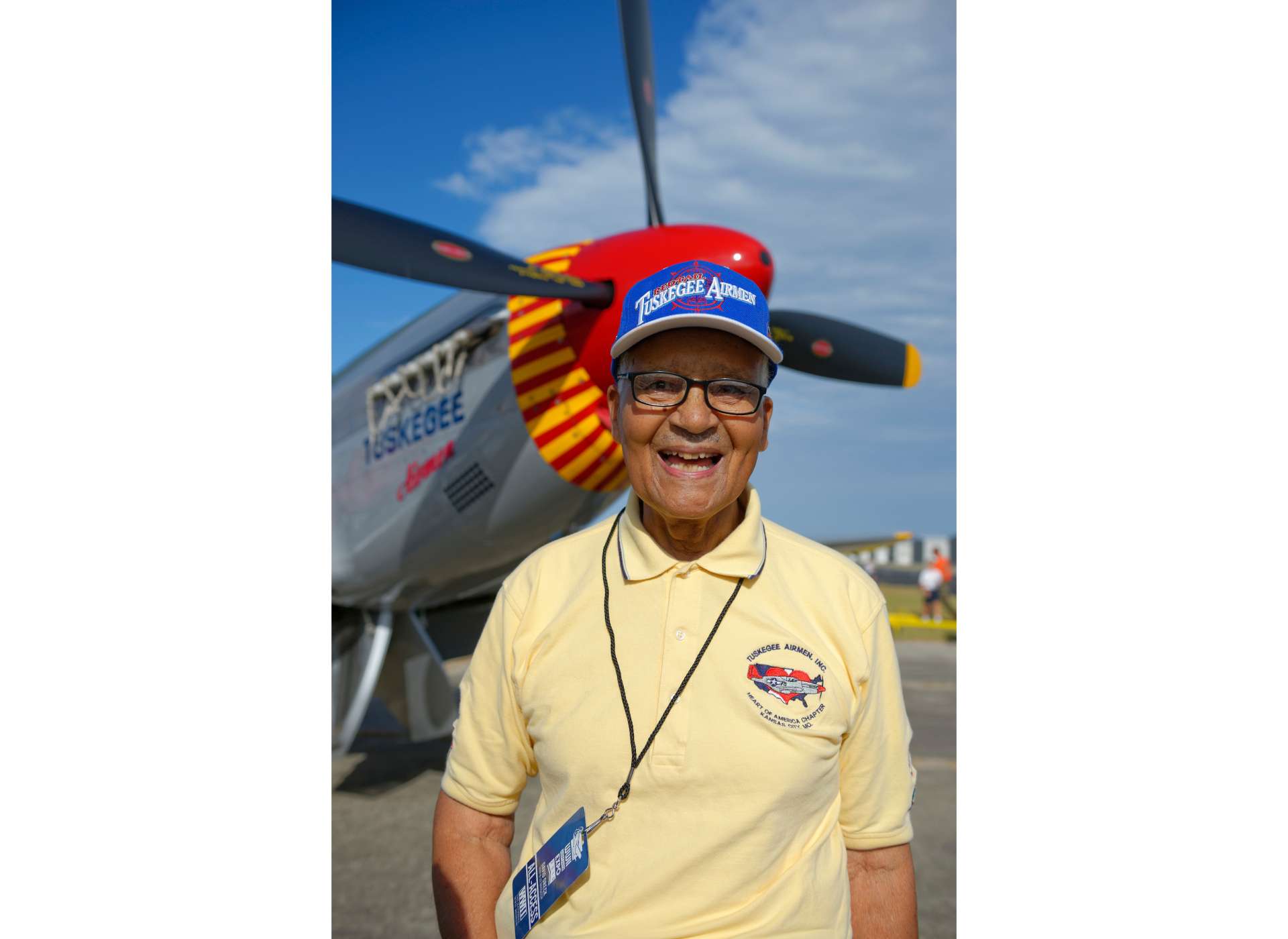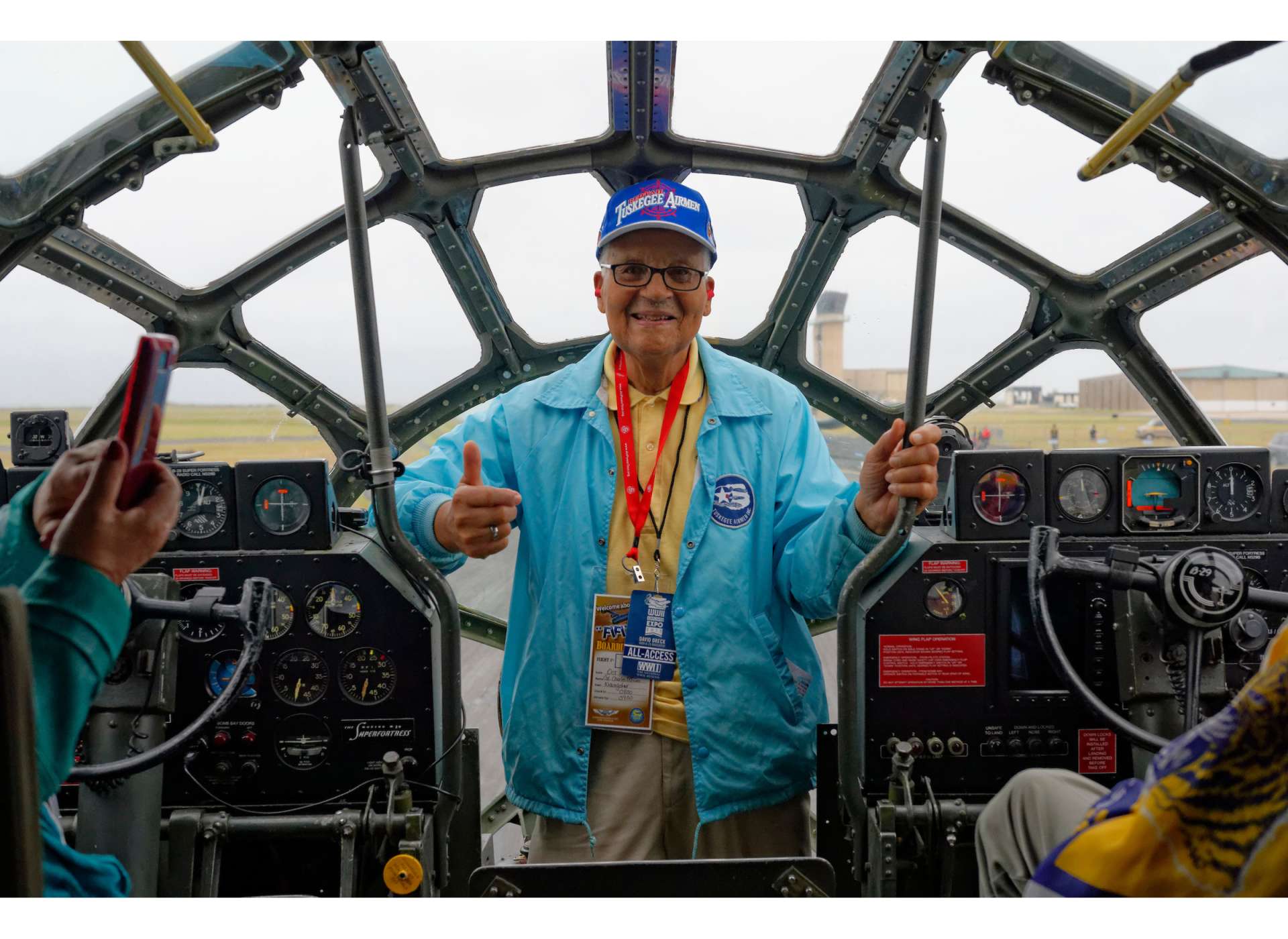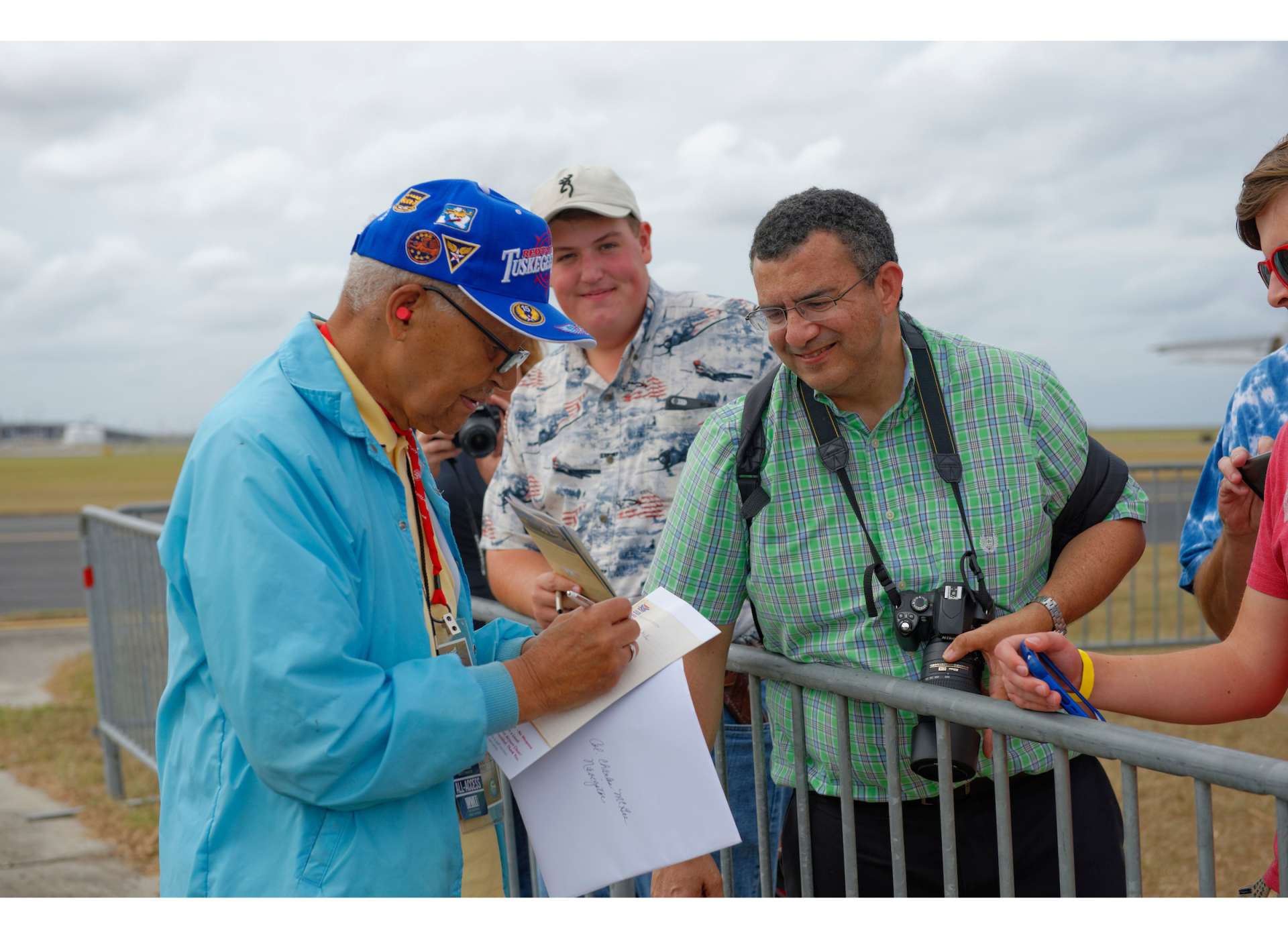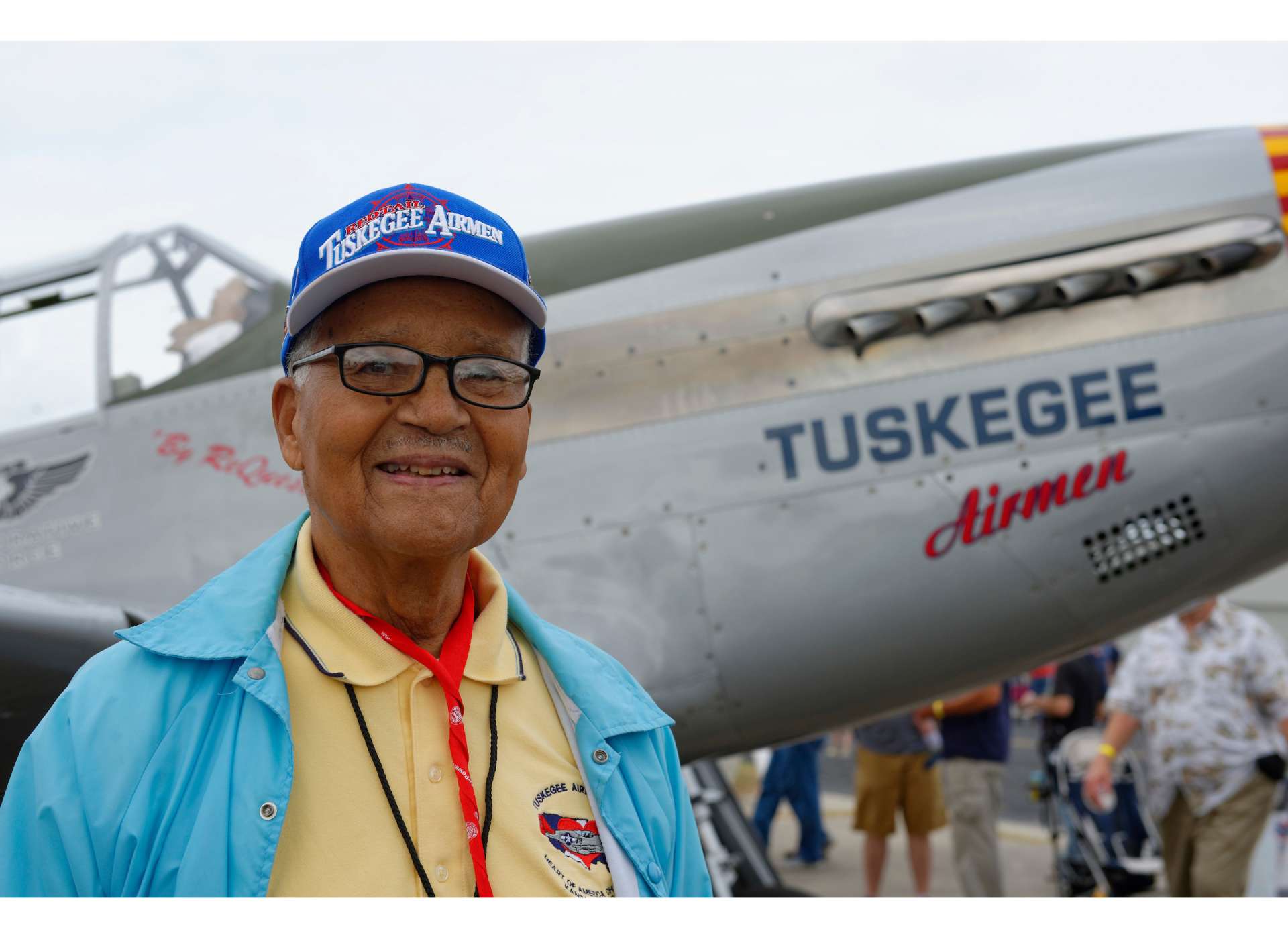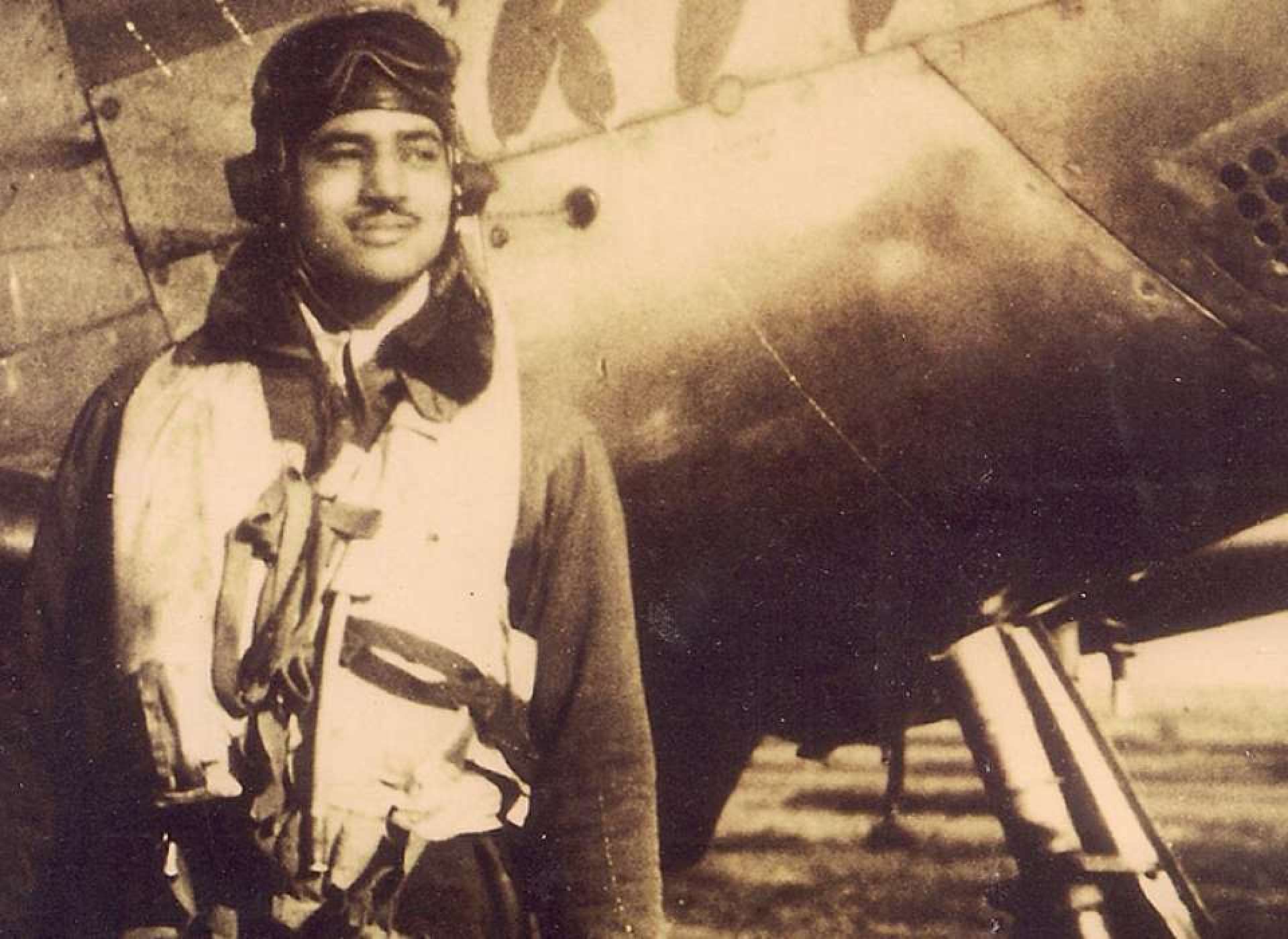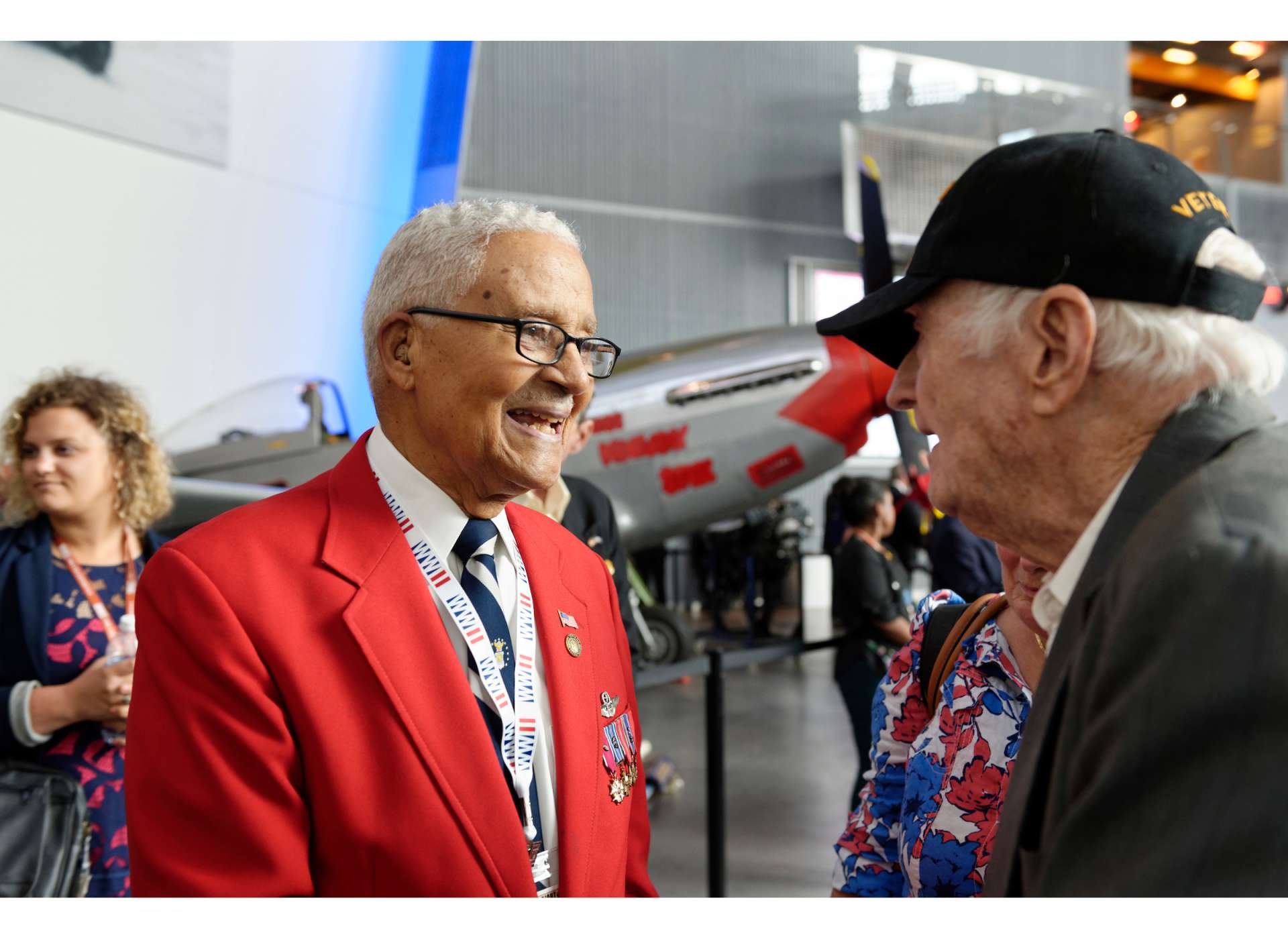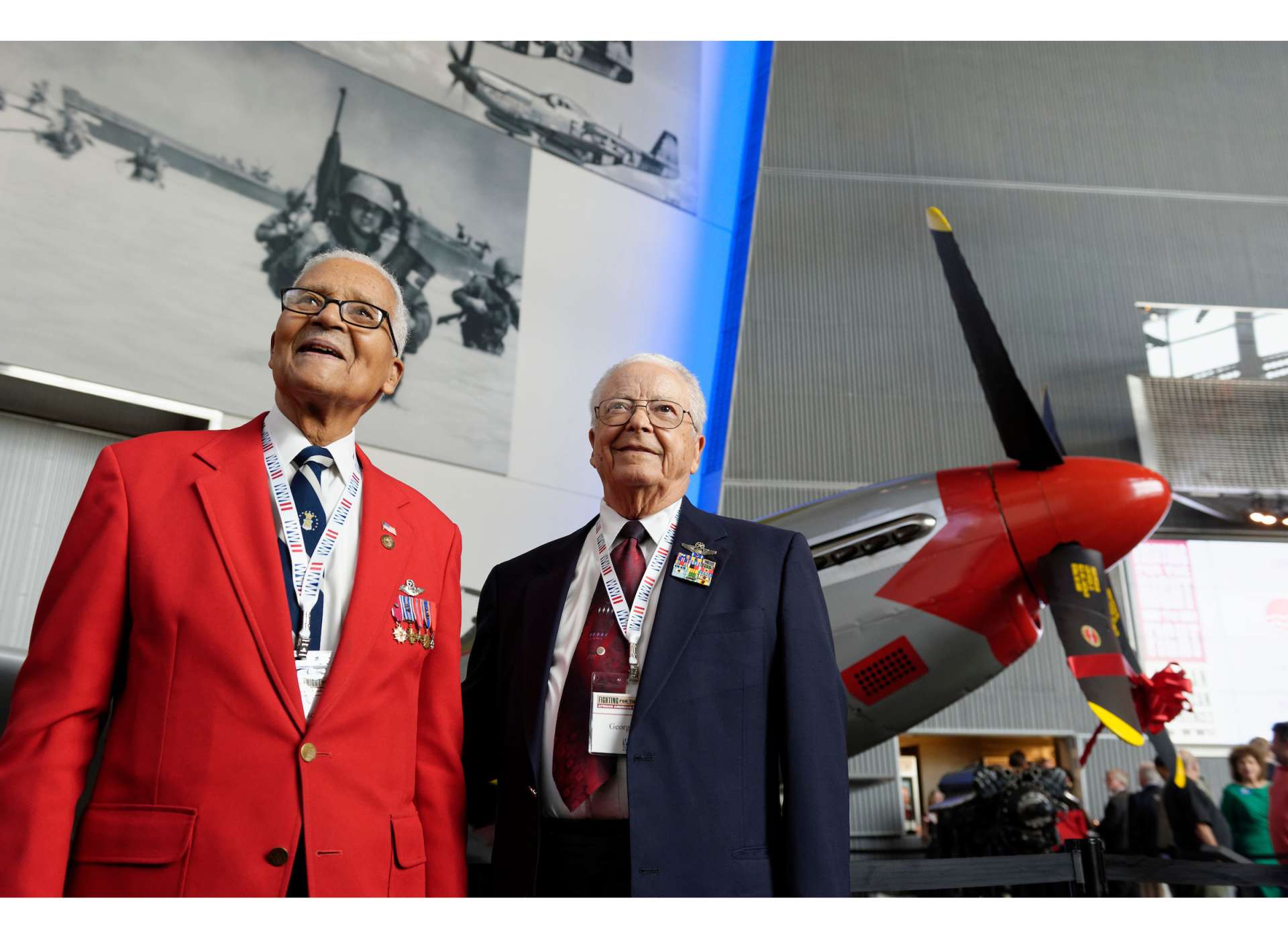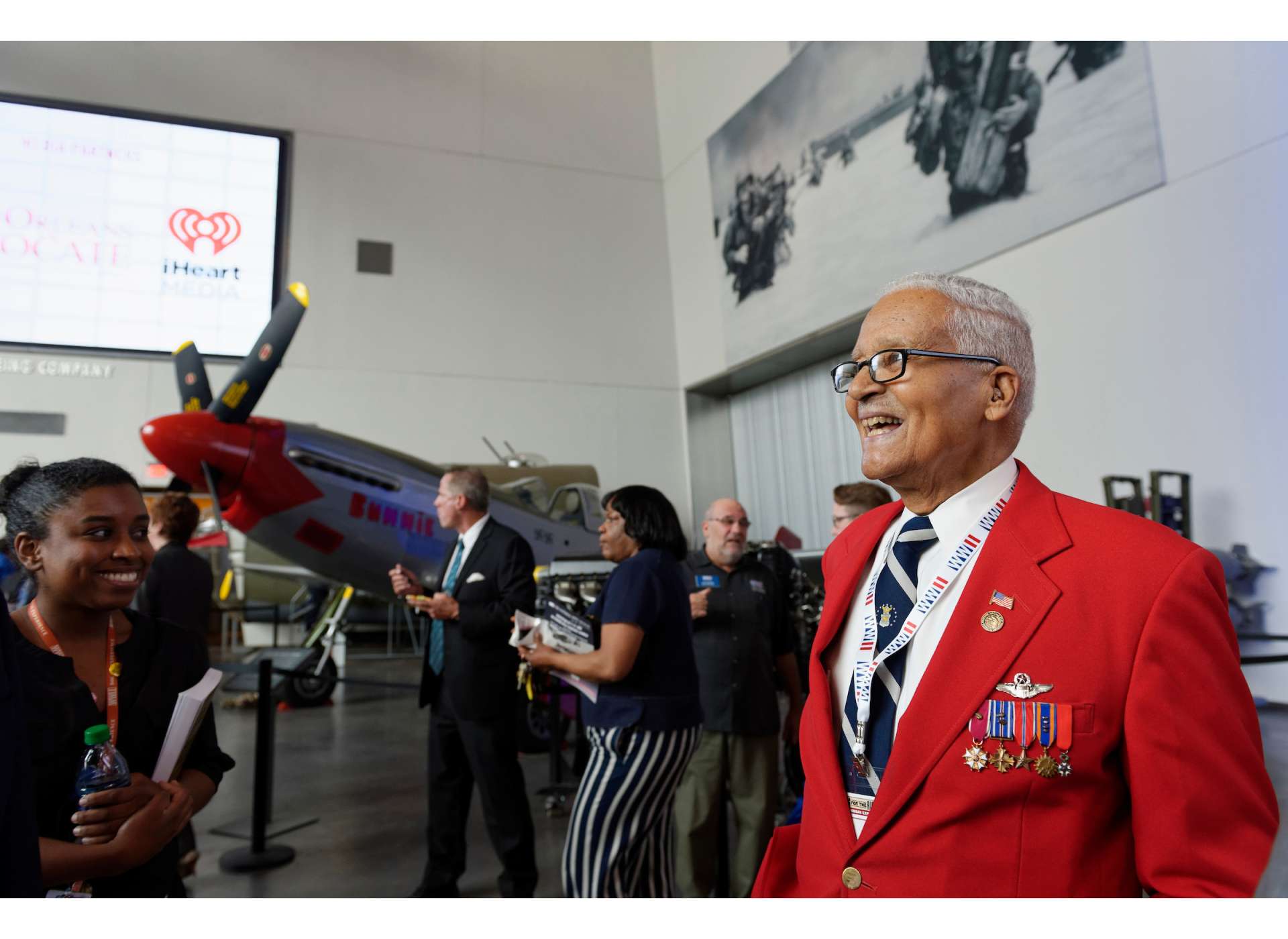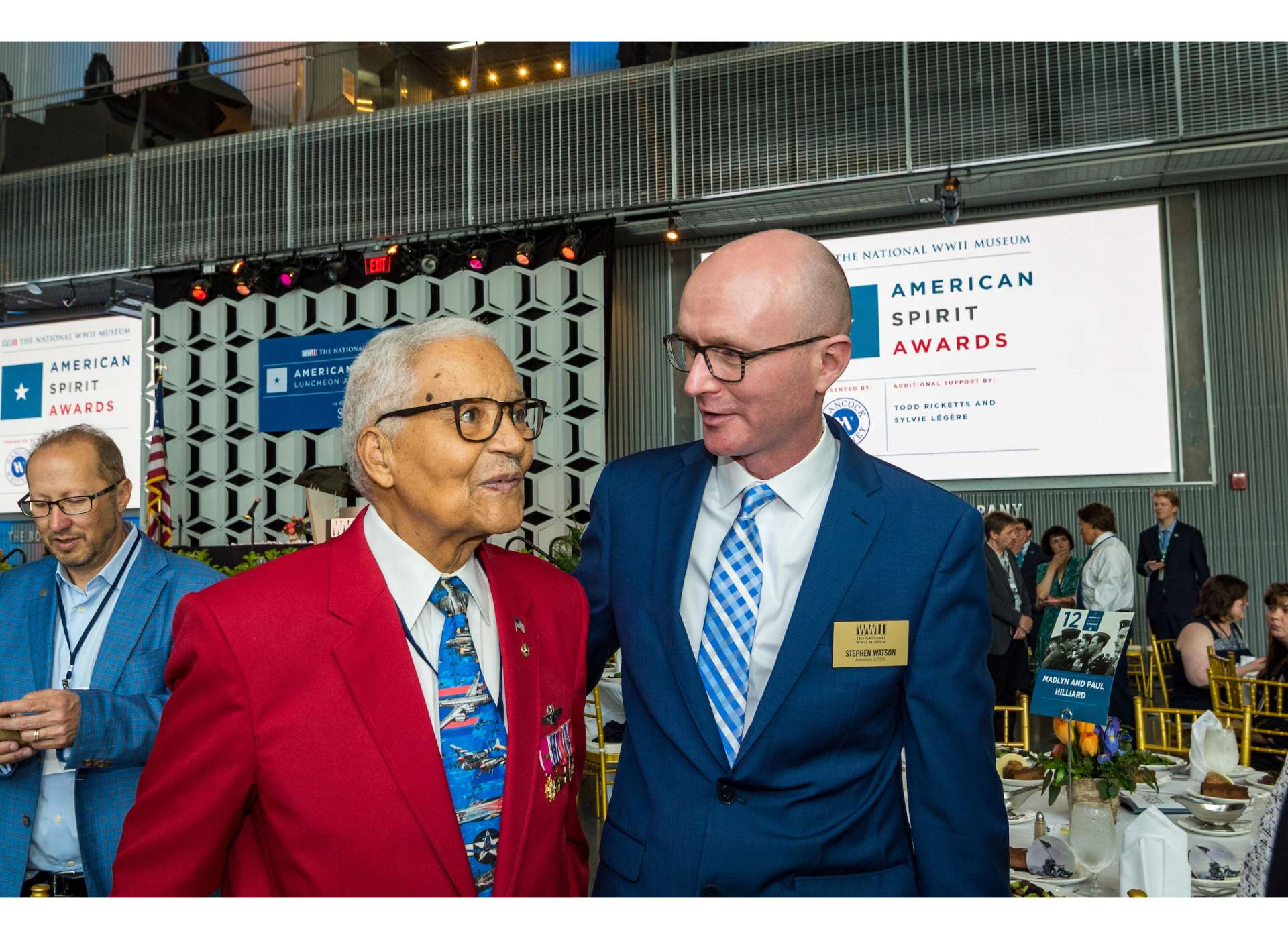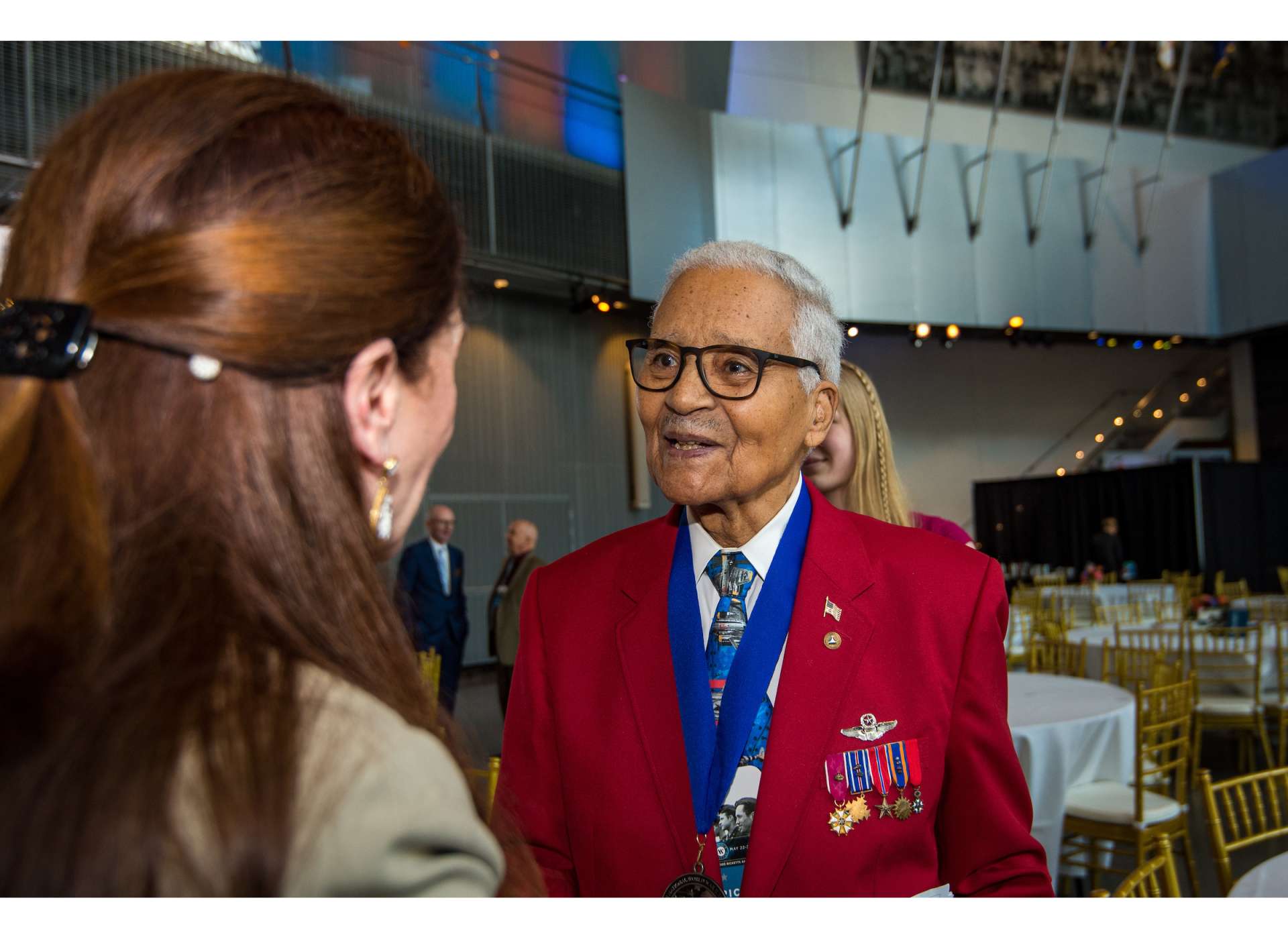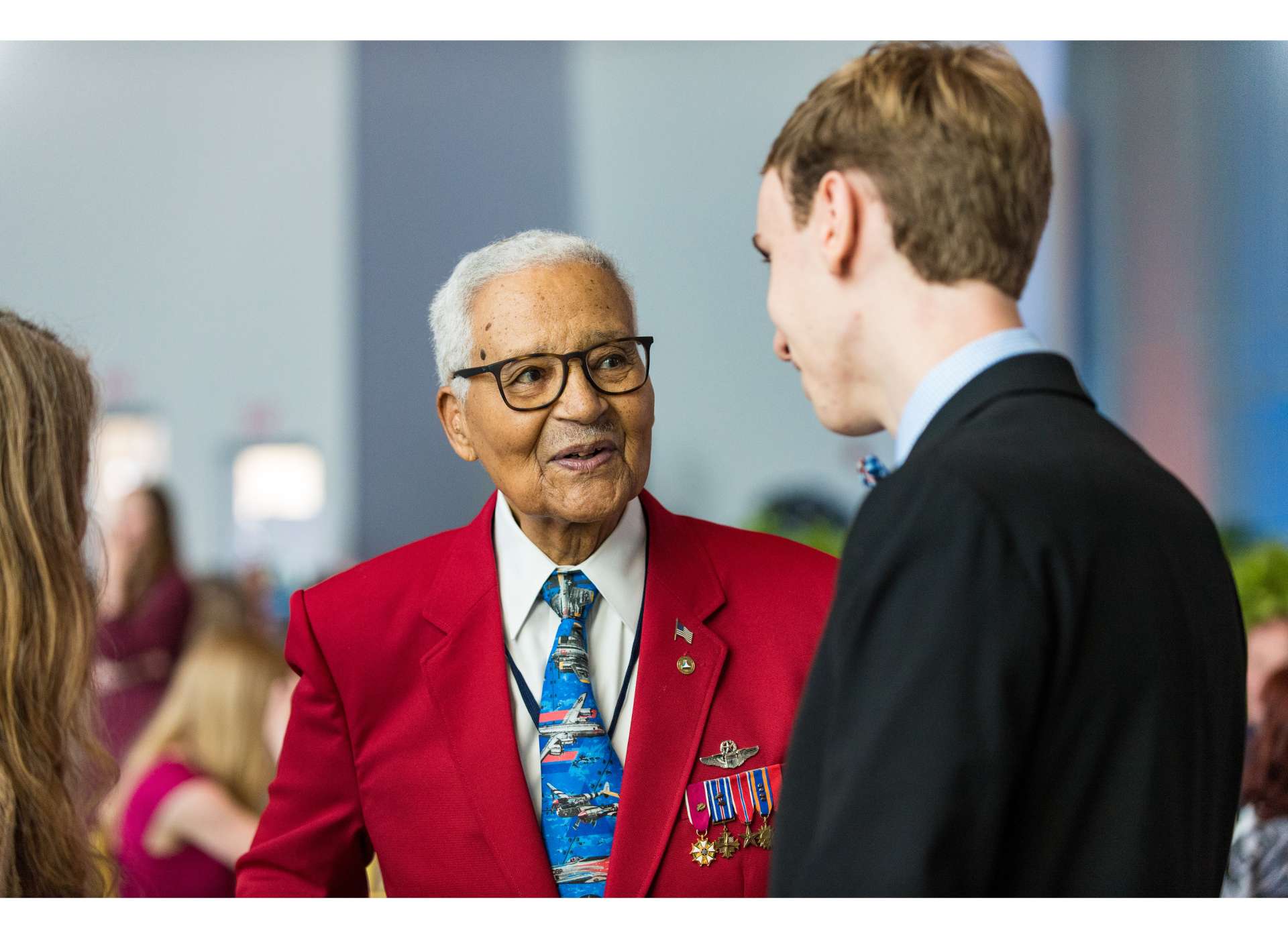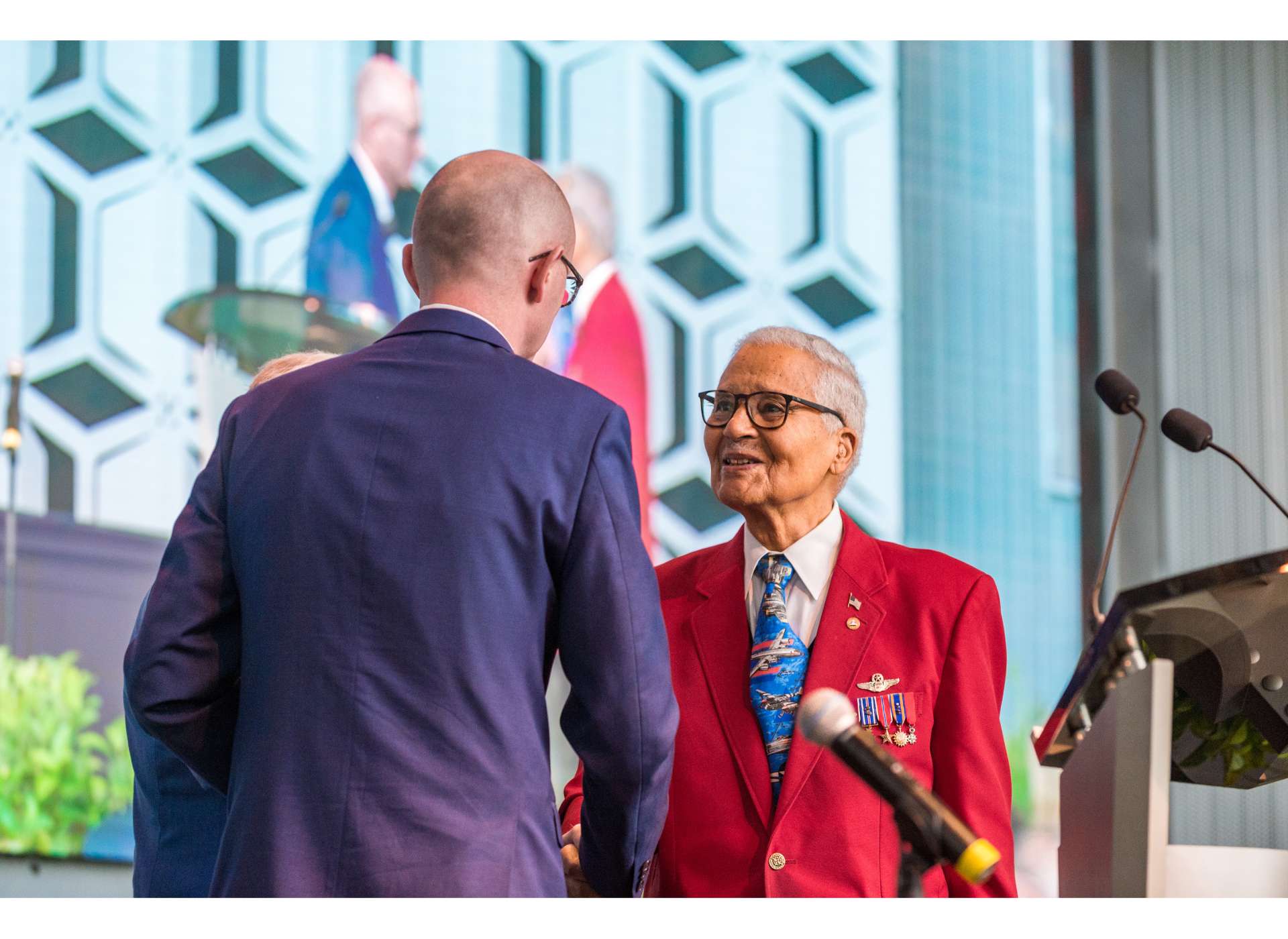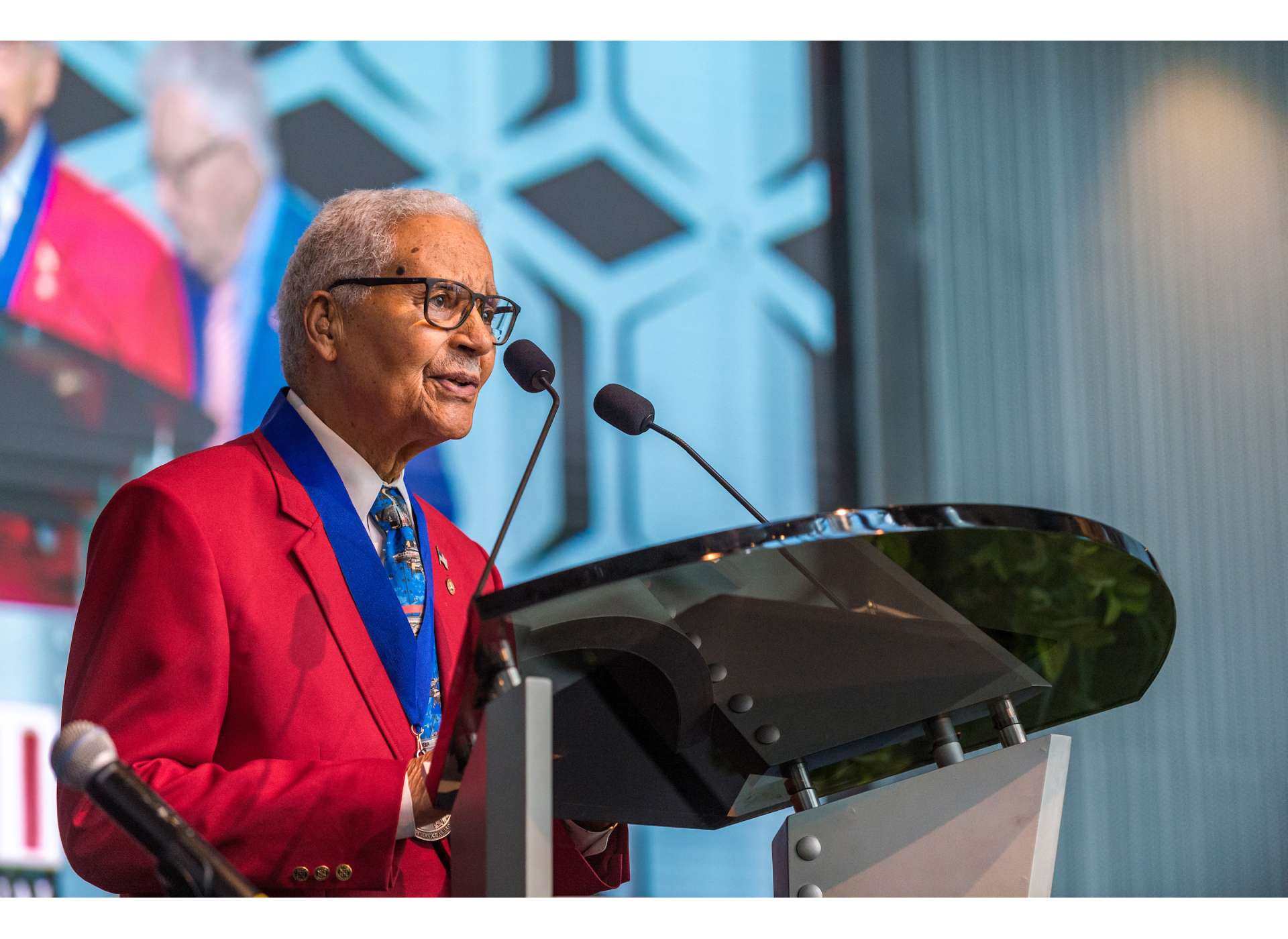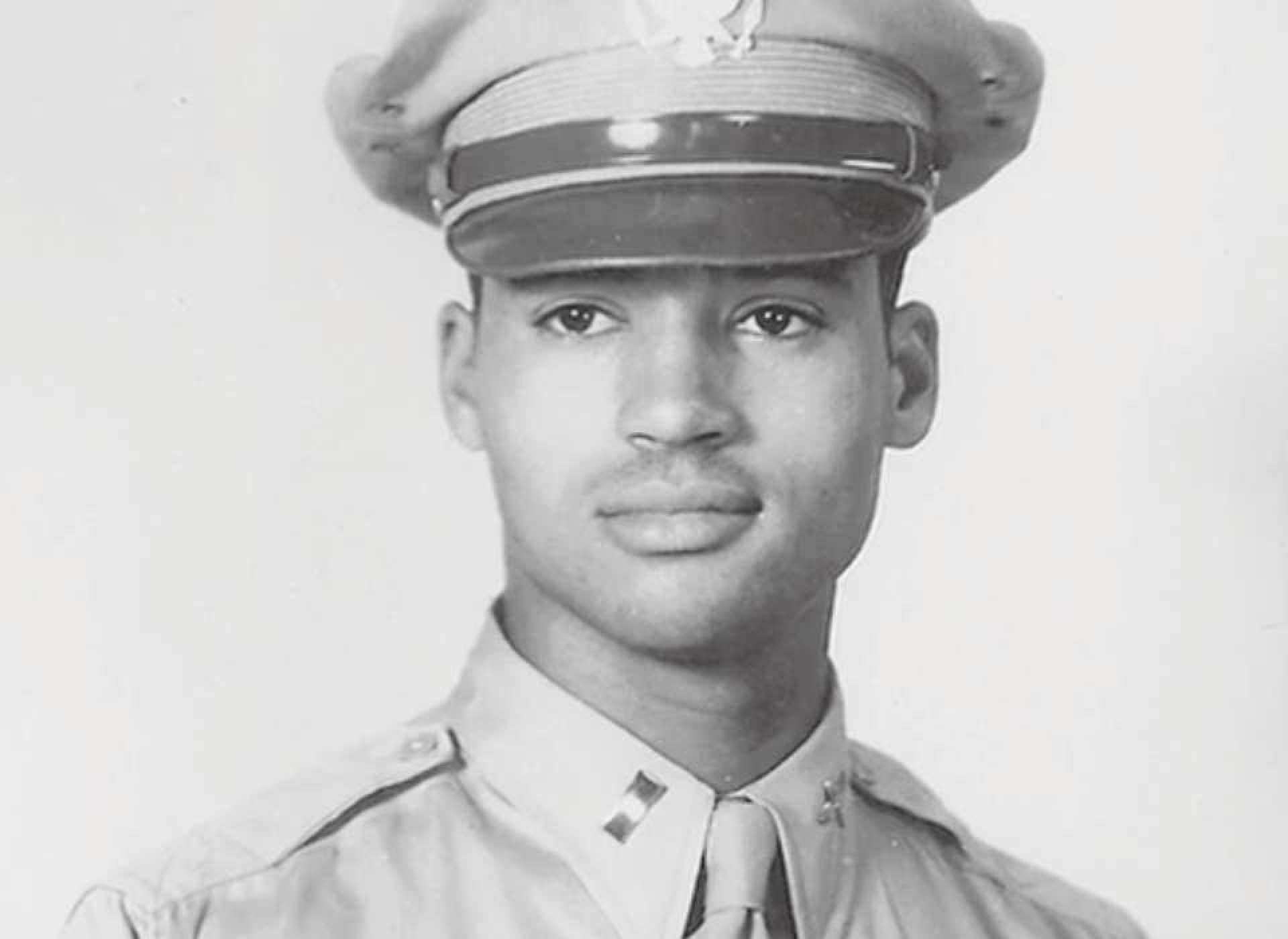The National WWII Museum mourns the loss of Tuskegee Airman, Brigadier General Charles E. McGee, who passed away on January 16, 2022, at 102 years old, at his home in Bethesda, Maryland.
McGee was a decorated combat pilot, whose service spanned three wars, and a selfless leader of character. He leaves behind him a powerful legacy of dedication, perseverance, and service.
An African American in a segregated US military, McGee battled against institutional racism and discrimination while serving his country in uniform for over 30 years. He embodied the mantra that he liked to pass on as advice to younger generations: “Perceive, Prepare, Perform, and Persevere.”
Brigadier General McGee was born on December 7, 1919, in Cleveland, Ohio. His father was an African Methodist Episcopal minister, teacher, and social worker, who had also served as a chaplain in the US Army in World War I.
Those family influences provided a strong foundation for his character. McGee worked hard and studied hard. As a young man, he joined the Boy Scouts of America. Taking the Boy Scout motto, “Be Prepared!” to heart, he earned the Eagle Scout Award in 1940. He learned to value education as a way of creating opportunities, and he went to college to study engineering. Years later, when he was being inducted into the National Aviation Hall of Fame in 2011, he urged his listeners, “Get an education, because you can’t take advantage of opportunity if you’re not at least initially prepared.”
When the United States entered World War II, McGee was an engineering student at the University of Illinois. Despite the discrimination African Americans faced in the United States at the time, McGee’s view was that "we're American and our country was at war.” In an interview in 2016, he recalled, "We were just as interested in supporting that [war] effort as anybody else at that time, and so we turned our back on the fact that there was segregation, if you will, and took advantage of the opportunity to prove that we can fly airplanes."
McGee enlisted in the US Army on October 26, 1942, and was sworn in as an aviation cadet. On June 30, 1943, he was one of the first pilots to graduate from the Army’s Tuskegee Institute. The pioneering Tuskegee Airmen were an experimental Army pilot training program that allowed African Americans to fly combat aircraft for the first time in American military history.
In February 1944, then-Lieutenant McGee was stationed in Italy with the 301st Fighter Squadron, part of the 332nd Fighter Group (FG). He flew his first combat mission on February 14. In the course of the war, he flew P-39 Airacobras, P-47D Thunderbolts, and, finally, P-51 Mustangs. McGee and his squadron served as fighter escorts for Allied bombing missions over Austria, Germany, and the Balkans and also conducted low-level attacks on enemy airfields and rail facilities. Because of the distinctive crimson paint on the vertical stabilizers of the 332nd FG’s aircraft, appreciative Allied aircrews gave them the nickname of “Red Tails” or “Red Tail Angels.” On August 23, 1944, while escorting American bombers over Czechoslovakia, McGee shot down a German fighter attacking the formation. Although he noted that enemy fire really “gets your attention,” consistent with McGee’s character, he observed that “the idea is not to kill the other pilot, you don’t go in with that [goal], but to hopefully destroy their aircraft.”
For his exceptional performance of duty, McGee was promoted to Captain, and after 136 combat missions, he returned to the United States. Back in Tuskegee, now a seasoned combat veteran, he served as an instructor for a group of Tuskegee Airman training on the B-25 Mitchell bomber for service in the Pacific Theater.
The accomplishments of Tuskegee Airmen such as Charles McGee helped lay the foundation for President Harry S. Truman’s decision to integrate the U.S. Armed Forces in 1948.
McGee continued to serve in the Army after World War II, and he joined the US Air Force when it became a separate service.
He went on to have a long and impressive military career, continuing as a trailblazer. When the Korean War broke out, McGee was soon flying P-51s in combat again. In Korea, he completed another 100 combat missions with the 67th Fighter Bomber Squadron and earned his promotion to Major. During the Vietnam War, McGee was in the cockpit again flying combat missions. As a Lieutenant Colonel, he flew another 172 missions in a RF-4 Phantom reconnaissance aircraft. During his active military career, McGee accumulated a record number of combat missions in three wars and amassed 6,308 flying hours.
He retired as a Colonel on January 31, 1973. His awards included two awards of the Legion of Merit, the Distinguished Flying Cross with two oak leaf clusters denoting subsequent awards, the Bronze Star, and the Air Medal with an impressive 25 oak leaf clusters.
In 1978, McGee completed his college degree at Columbia College in Kansas City. World War II had interrupted his goal of attaining a college degree, and it remained a lifelong goal for him.
In 2007, President George W. Bush awarded McGee and the other surviving Tuskegee Airmen the Congressional Gold Medal, the country’s highest civilian award. In 2011, McGee was inducted into the National Aviation Hall of Fame. On February 4, 2020, President Donald Trump promoted McGee to Brigadier General in the Oval Office and recognized him in the State of the Union Address that evening.
Throughout the years, McGee has also been a close friend of The National WWII Museum and generously gave of his time to share his wartime experiences with students and audiences of all ages at Museum programs including the 2014 grand opening of Road to Berlin, 2015 WWII Airpower Expo and the 2016 dedication of a restored P-51 D Mustang painted in the likeness of the 332nd Fighter Group’s Red Tail, which hangs in the Museum’s US Freedom Pavilion: The Boeing Center. In 2019, the Museum honored McGee’s legacy of service by awarding him its Silver Service Medallion. His oral history will be forever preserved in the Museum’s collection and is featured in the Museum’s Arsenal of Democracy and Road to Berlin permanent exhibits.
McGee’s mantra rings true today: “Perceive, Prepare, Perform, and Persevere.” His life was the embodiment of each of those attributes. The professionalism, perseverance, and character of Brigadier General Charles McGee made a difference during his lifetime and will remain a source of inspiration for generations to come.
